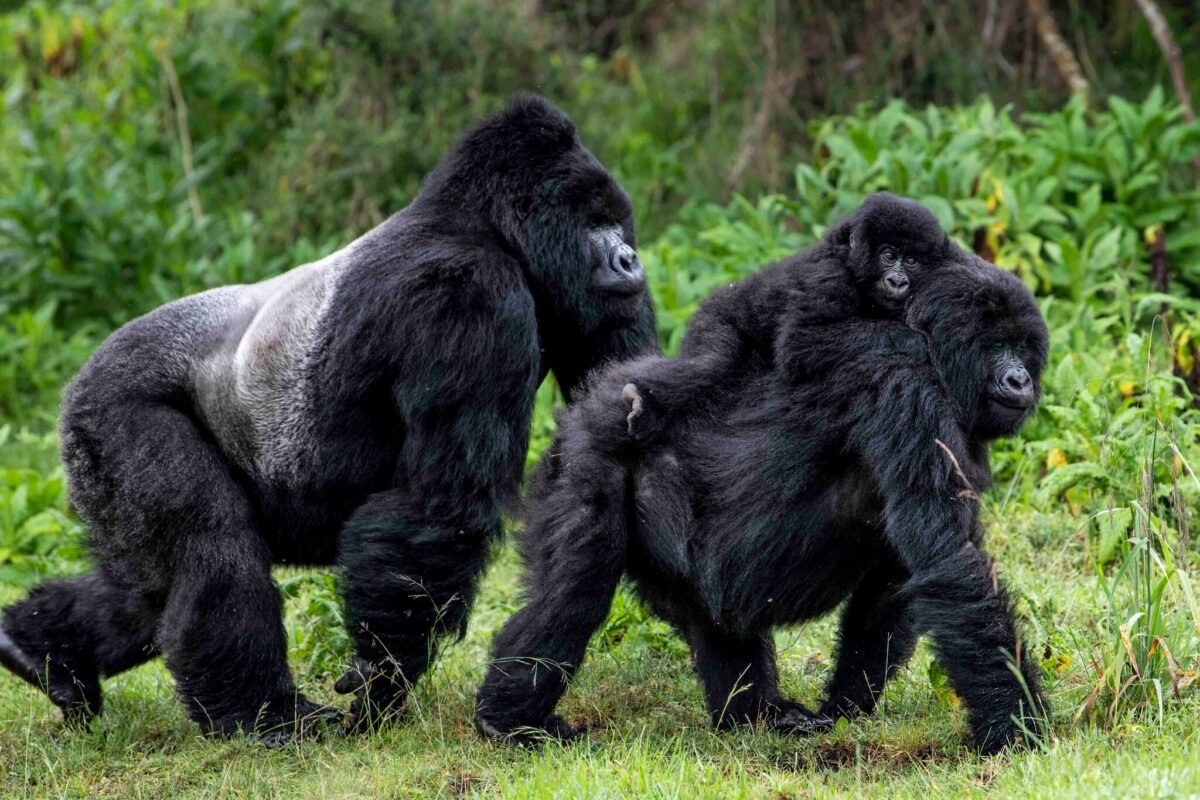
Gorilla Trekking – A Once-in-a-Lifetime Wildlife Encounter
Gorilla trekking is one of the most thrilling and emotional wildlife experiences on the planet. This rare activity takes you deep into the heart of Africa’s montane rainforests, where you hike through dense vegetation to stand just meters away from one of the world’s most endangered and majestic creatures—the mountain gorilla.
Found only in Uganda, Rwanda, and the Democratic Republic of Congo, gorilla trekking is a bucket-list adventure for nature lovers, conservationists, photographers, and anyone seeking a meaningful connection with the wild.
What Is Gorilla Trekking?
Gorilla trekking refers to the guided hikes conducted in protected national parks that lead you to a habituated family of mountain gorillas. The experience typically starts early in the morning, with a briefing from park rangers, followed by a trek that can last anywhere from 1 to 6 hours, depending on the gorillas’ location.
Once found, trekkers are allowed one magical hour to observe the gorillas in their natural habitat—feeding, grooming, playing, and even making eye contact. It’s an intimate, respectful experience that leaves a lasting impact.
Best Destinations for Gorilla Trekking
1. Uganda
Uganda offers gorilla trekking in two national parks: Bwindi Impenetrable National Park and Mgahinga Gorilla National Park. Bwindi is home to over 20 habituated gorilla families and offers both standard treks and the Gorilla Habituation Experience, which allows four hours with a semi-habituated group.
Uganda is known for affordable permits ($800) and offers a raw, immersive trekking experience through thick rainforest.
2. Rwanda
Volcanoes National Park in Rwanda is a premier destination for luxury gorilla trekking safaris. The park is easily accessible from Kigali, and Rwanda has built a reputation for conservation excellence. Gorilla trekking permits here cost $1,500, supporting sustainable tourism and high-end experiences.
3. Democratic Republic of Congo
Virunga National Park in eastern Congo offers the most budget-friendly permits (approx. $400). It’s ideal for adventurous travelers but requires checking travel advisories due to political instability.
Gorilla Trekking vs Gorilla Tracking
While both terms are often used interchangeably, gorilla trekking typically refers to longer hikes through forest terrain to locate gorilla families, while gorilla tracking can mean following pre-located gorilla groups, often with shorter walk times. In practice, both offer the same incredible opportunity to witness mountain gorillas in the wild.
Permit Costs and Booking

To participate in gorilla trekking, visitors must obtain a permit issued by the park authorities:
- Uganda: $700 (standard trek), $1,500 (habituation experience)
- Rwanda: $1,500
- Congo: $400
Permits should be booked at least 3–6 months in advance, especially in peak seasons (June–September and December–February).
Tour operators like Go Safaris Africa handle all permit arrangements as part of a complete gorilla trekking safari package.
What to Expect on the Day
Your gorilla trekking day starts early, usually around 7:00 AM, with a safety and etiquette briefing. You’ll then be assigned a gorilla family based on your fitness level and interest. The trekking itself may involve:
- Steep hills, muddy paths, and dense undergrowth
- A team of armed rangers and trackers for safety
- Unexpected weather changes (rainforest conditions)
Once the gorillas are found, you’ll spend a strictly timed 60 minutes with them, maintaining a respectful distance of 7 meters (unless they approach you!).
What to Pack for Gorilla Trekking
To enjoy a safe and comfortable gorilla trekking experience, bring:
- Waterproof hiking boots
- Long-sleeved shirts and trousers
- Rain jacket or poncho
- Garden gloves (for handling vegetation)
- Reusable water bottle and energy snacks
- Insect repellent and sunscreen
- Camera (no flash)
Hiring a local porter ($10–$20) is highly recommended—they carry your bag and help with challenging sections while supporting local livelihoods.
Gorilla Conservation and Responsible Tourism
The survival of mountain gorillas is one of the greatest conservation stories in Africa. Once on the brink of extinction, their population has rebounded thanks to strict protection, community engagement, and revenue from gorilla trekking tourism.
Every permit you purchase contributes to:
- Anti-poaching patrols
- Habitat protection
- Local community development
- Research and conservation initiatives
By participating in Mountain gorilla tracking, you directly support the preservation of these gentle giants for future generations.
Cultural and Scenic Add-Ons
Gorilla tracking safaris often include more than just the trek itself. Depending on your destination, you can combine gorilla encounters with:
- Game drives in Queen Elizabeth National Park or Akagera National Park
- Chimpanzee tracking in Kibale Forest or Nyungwe Forest
- Cultural visits to Batwa communities or traditional Rwandan villages
- Relaxation on Lake Bunyonyi or Lake Kivu
These experiences enrich your journey and offer a deeper look into the local cultures and landscapes that surround gorilla territory.
Encounter Mountain Gorillas in Uganda, Rwanda & Congo
Gorilla trekking is not just a tourist activity—it’s a life-changing encounter with one of humanity’s closest relatives. Whether in the jungles of Uganda, the volcanic slopes of Rwanda, or the misty mountains of Congo, meeting mountain gorillas in the wild is a profound reminder of our shared connection to the natural world.
Let Go Safaris Africa help you plan the perfect gorilla trekking adventure—from permits and transport to accommodations and expert guides. Your journey to the heart of Africa begins with one step into the forest.
